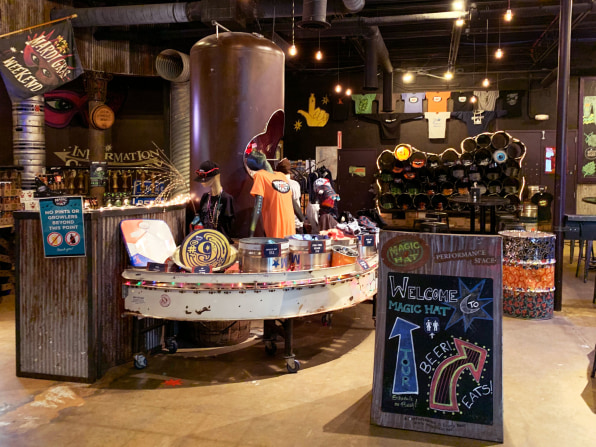In the soggy, gray late winter of 2019, Magic Hat Brewery had a problem that other brewers would die for. Founded in 1994 in Burlington, Vermont, the craft brewery had quickly gained a reputation for fun, risk-taking beers with colorful labels–imagine if Ben & Jerry had gone into beer rather than ice cream. Twenty-five years later, Magic Hat had gone through multiple changes in ownership and management–scooped up in 2010 by North American Breweries (which also owned Labatt’s and Genesee), which was purchased in 2012 by the Costa Rican company Florida Ice & Farm Co–and its reputation and bottom line were linked inseparably to the success of a single beer that was almost as old as the company.
No. 9, a fruity, floral, light ale, was introduced as a seasonal summer beer in 1994, and it’s never left the company’s lineup. Bashed by beer snobs–is that . . . apricot?!–it was a breakout hit with less uptight drinkers, especially women, and demand for No. 9 helped Magic Hat reach a market outside New England. Today, No. 9 represents 54% of Magic Hat’s sales (estimated at $354 million); it’s sold alone and as a cornerstone of the company’s variety packs, with distribution spread across 40 U.S. states (most craft breweries do 80% of their business in just two to four states). But fierce competition in the beer space has started cutting into No. 9’s sales, highlighting the urgency of innovation at company that, with each passing year, was looking more and more like a one-trick pony.

Making a splash in the beer market, though, is a lot harder today than in the heady days of the mid-1990s. In 2018, the number of breweries operating in the United States surpassed 7,000 for the first time; some 1,000 new breweries are expected to open in 2019, according to the Brewers Association. Most of these are small, “craft” breweries, which now account for about a quarter of all U.S. beer sales. It’s a good time for beer drinkers seeking novelty, less so for established brands like Magic Hat trying to stay relevant.
The standard playbook includes rebranding (revamping packaging and trying new form factors, aka cans), introducing seasonal or limited-run products that glom on to emerging trends, and, if all else fails, retrenching around a few core products (see Sierra Nevada). Magic Hat has enjoyed some success on the repackaging and product innovation front. In late July last year, for example, the company did a nationwide rollout of a new Double IPA called Laughing Stock–a burly No. 9 antidote selected as an employee favorite in an in-house competition two years earlier, which had strong local sales.
FROM HANGOVER TO HAIL MARY
But there’s a bigger problem with beer itself. While craft brewers continue to increase sales–they were making 5% more beer at the middle of 2018 than the year before–since 2008, the total beer category has been slowly declining, as millennials remodel the beverage alcohol industry. In a 2018 Gallup poll, more than a quarter of American drinkers listed wine as their preferred beverage–the largest share in the poll’s 25-year history. And according to Wine Spectator, millennials consumed more wine in recent years than any other generation–42% of all wine drunk in the U.S. Liquor sales are also rising, boosted by millennial’s love of vodka and tequila; 2018 was the 23rd consecutive year of growth for the U.S. spirits market, according to Shanken’s Impact Databank Review & Forecast.

No comments:
Post a Comment